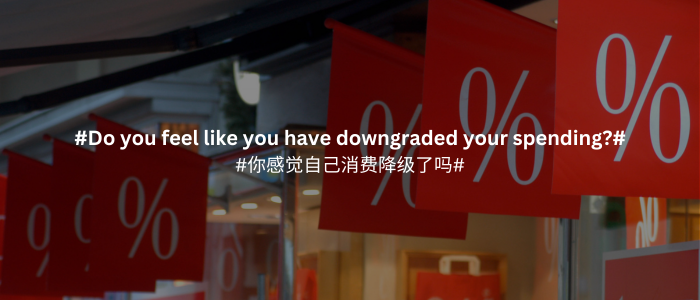
Behind the Numbers - China's 5.3% Growth Masks Deepening Economic Fault Lines
Behind the Numbers: China's 5.3% Growth Masks Deepening Economic Fault Lines
The Paper Dragon Economy: Growth on the Surface, Fragility Underneath
BEIJING — In the gleaming towers of China's financial district, officials celebrate another quarter of robust economic expansion. But in the shadow of those same towers, an entirely different narrative unfolds in the struggling shops, half-empty malls, and stalled construction sites that dot the country's urban landscape.
China's economy grew by 5.3% year-on-year in the first half of 2025, according to data released this week by the National Bureau of Statistics. Total GDP reached 66.05 trillion yuan, comfortably on track to meet the government's annual target of "around 5%" growth.
"The GDP grew. But we didn't," reads a widely shared comment on Chinese social media platforms, encapsulating a growing disconnect between official statistics and lived reality for many Chinese citizens.

A Tale of Two Economies: Official Triumph vs. Daily Struggle
The statistical portrait painted by Beijing shows an economy steadily navigating global headwinds. Industrial output rose 6.4%, retail sales grew 5.0%, and exports surged 7.2% year-on-year. The tertiary sector, covering services, outpaced overall growth at 5.5%.
Yet beneath these headline figures lies a more complex and troubling economic landscape. Industrial profits fell 1.1% despite the output increase, suggesting companies are producing more but earning less. Fixed asset investment grew by just 2.8% overall, while real estate investment plummeted 11.2%, highlighting the continued implosion of what was once China's economic cornerstone.
"We're seeing an economy on steroids," explains a Shanghai-based economic analyst who requested anonymity. "The government is pumping in stimulus through record fiscal deficits, estimated between 12 and 13 trillion RMB, or roughly 10% of GDP. But this is delaying systemic risks, not preventing them."
The Deflation Dilemma: Growing in Volume, Shrinking in Value
China's consumer price index fell 0.1% in the first half of 2025, marking a deepening deflationary trend that began last year. While core CPI managed a slight 0.4% increase, the negative GDP deflator suggests China's economy is barely growing in nominal terms.
This deflationary environment has sparked intense price competition across multiple sectors. Electric vehicles, consumer electronics, and home appliances have entered what industry insiders call "price-for-volume" wars, with companies sacrificing margins to maintain market share.
"When a factory can produce more but earn less, and when GDP rises while wages stagnate, we must question what these growth figures really mean for ordinary people," notes a Beijing-based economist. "Nominal GDP, not real GDP, services debt. With a negative deflator, leverage is quietly rising even as headline growth meets targets."
The Export Sugar Rush: Front-Running Trump's Tariffs
A significant portion of China's reported growth appears to come from what analysts describe as "front-loaded exports" – a temporary surge in shipments to the United States ahead of anticipated new tariffs.
U.S.-bound exports jumped 32% month-on-month in June, an unsustainable pace that many expect to reverse sharply once the August tariff deadline hits. This sugar rush of export activity masks underlying weakness in domestic demand, with consumption increasingly reliant on credit rather than rising incomes.
"Consumer spending is being propped up by debt, not prosperity," says a consumer research analyst. "Credit card outstanding balances are up 11% year-to-date, while real wage growth is essentially flat. It's drinking poison to quench thirst."
Ghost Cities and Empty Cranes: The Property Crisis Deepens
The most visible symbol of China's economic contradictions remains its vast real estate sector, where investment contracted 11.2% in the first half of the year. June real estate investment dropped even more sharply, down 12.9% year-on-year, with new home prices falling at their fastest monthly rate in eight months.
The property downturn has rippled through related industries, with steel and cement output falling despite government efforts to stabilize the sector. In lower-tier cities, the crisis is particularly acute, with some developments standing empty even as local government financing vehicles struggle to service mounting debt.
"The property sector isn't just another industry in China – it's been the foundation of household wealth, local government revenue, and economic growth for decades," explains an urban development researcher. "Its continued decline threatens the entire economic model."
Stimulus Limits: Running Out of Policy Ammunition
Beijing's policy toolkit is increasingly constrained. Monetary easing is hampered by currency pressures, with the renminbi already trading near 7.55 against the U.S. dollar. Fiscal space is limited by rising debt levels, now approximately 100% of GDP by broad definitions.
Markets anticipate another supplementary budget of around 1 trillion yuan and a 10-basis-point policy rate cut following the late-July Politburo meeting. However, analysts increasingly question whether these measures will be sufficient to address deep-seated structural problems.
"Each round of policy support buys time yet erodes balance-sheet strength," observes a bond market strategist. "We're caught in a stimulate-and-fade cycle that addresses symptoms but not causes."
Investment Roadmap: Navigating China's Uncertain Waters
For investors eyeing opportunities in this complex environment, selectivity and risk management have become paramount. Based on current market conditions and trajectories, several strategic positions merit consideration:
Chinese government bonds, particularly 10-year instruments, present attractive opportunities in a deflationary environment with limited supply. The yield curve is likely to flatten as growth concerns mount.
In equity markets, consumption upgrade sectors like sportswear and mass-market beauty products show resilience, along with state-owned utilities. Conversely, mid-tier electric vehicle supply chains and traditional materials like steel and cement face significant headwinds.
The offshore yuan appears vulnerable to further depreciation, with policy easing bias and trade tensions suggesting potential for movement beyond 7.8 against the dollar in coming months.
For commodities, aluminum may outperform copper, reflecting continued investment in grid infrastructure while construction-linked metals struggle.
These positioning strategies should be viewed through the lens of China's most likely economic trajectory—a controlled deceleration rather than either a hard landing or a dramatic policy-driven rebound. Investors should closely monitor the upcoming Politburo communiqué, credit impulse indicators, and housing transaction volumes for signals of policy direction.
Disclaimer: This analysis represents an informed perspective based on current data and established economic indicators. Past performance does not guarantee future results. Readers should consult qualified financial advisors before making investment decisions.